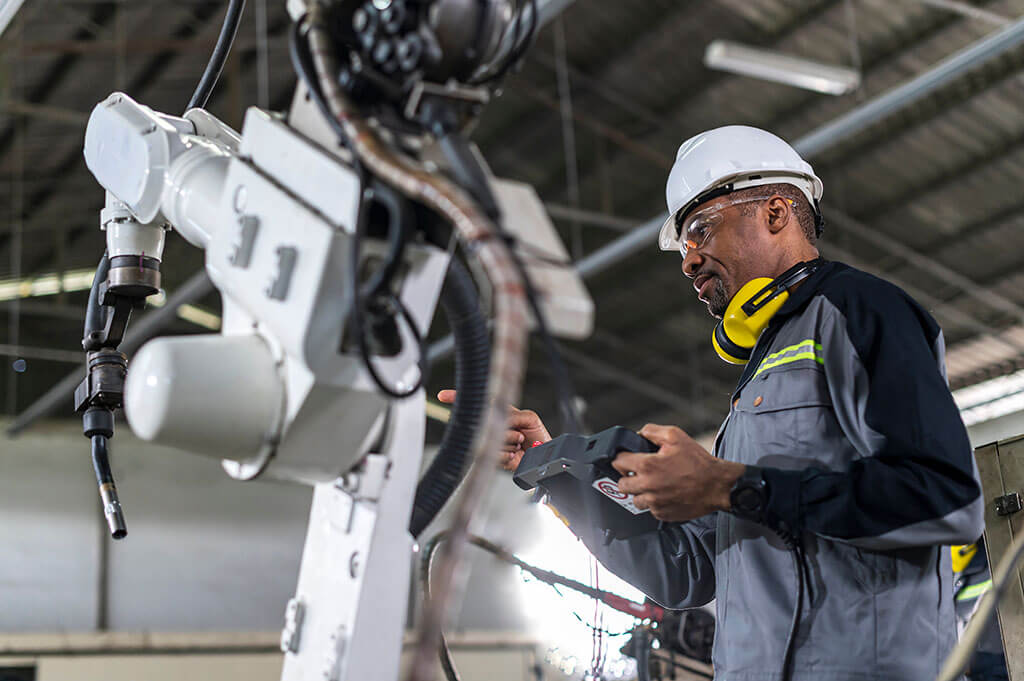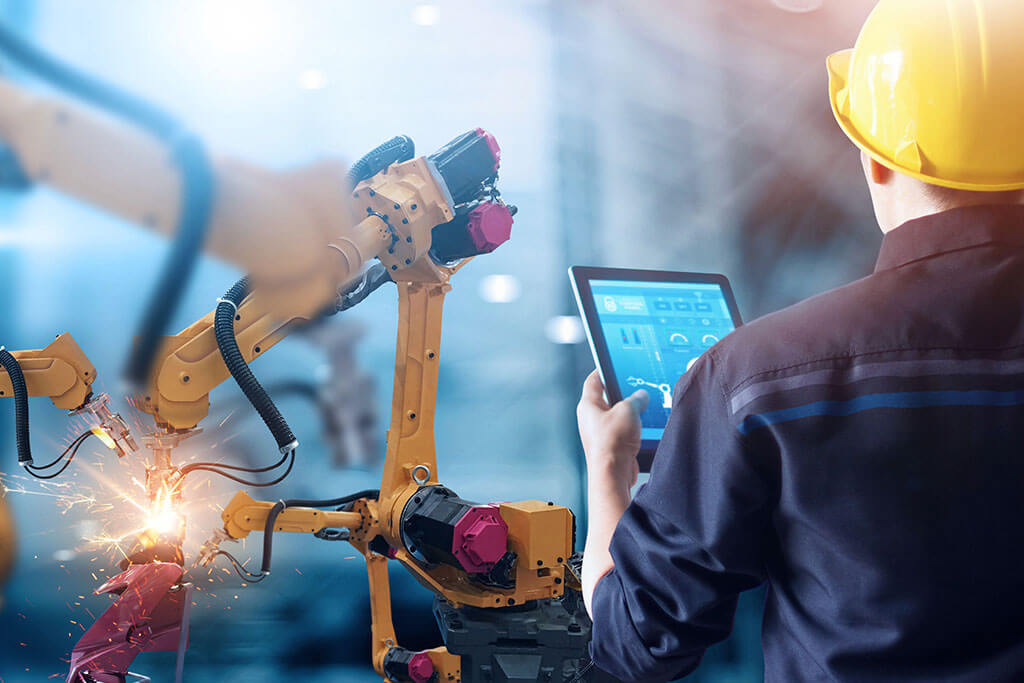Insights
Four cutting-edge technologies that are revolutionising industry
Author
Sandeep Raithatha
Head of Strategy, Innovation & 5G IoT
Virgin Media O2 Business
5 minutes
23rd November 2022
Share this article:
New emergent technologies are enabling new opportunities in manufacturing. Sandeep Raithatha, Head of Strategy, Innovation & 5G IoT at Virgin Media O2 Business, highlights four technologies that are making a difference today.
Industry 4.0 is a term that’s been used to describe a new industrial era powered by a set of cutting-edge technologies:
- Internet of Things (IoT)
- Artificial Intelligence
- 5G and new advances in connectivity
- Edge computing
- Blockchain
- Big data
- Cloud computing
These emerging technologies are producing exciting opportunities in the way we manufacture and produce goods. In fact, an incredible 94% of organisations that have introduced 4.0 technologies say they have had a positive impact.
Our new eBook Industry 4.0: Sustainability, security and new business opportunities details the new landscape and the impact of Industry 4.0 technologies on elements such as time-to-market, reducing costs, resilience and even environmental impact. Most of these opportunities are enabled by the connectivity of 5G, providing the high speed and low latency that means manufacturers don’t need to rely on cabling.
Here are four of the key technologies featured that caught my eye.
1. Sensors enabled by IoT and AI
IoT provides opportunities to place connected sensors into an industrial environment that can sense everything from temperatures to the location of equipment to the tiniest of vibrations. When brought together, the data produced by sensors provides essential insights that lead to improved safety, reduced environmental impact, increased efficiency and more. With effective analysis, manufacturers can drive continual improvement, while also carrying out real-time monitoring.
For example, a sensor might spot irregular vibrations in a specific piece of equipment that can then be replaced quickly within an hour, before it causes damage that will be far more disruptive and costly to repair.
Using AI to analyse huge amounts of structured and unstructured data that comes from sensors and other inputs can also unlock value for manufacturers. Detecting patterns and trends that would otherwise remain hidden, can reveal the need for real-time action, as well as suggest longer-term improvements. Machine learning can also help optimise certain tasks in areas such as inventory and demand management, keeping production aligned with supply chain conditions.
2. AI-driven intelligent robotics
A range of 4.0 technologies including AI, 5G and high-speed mobile data networks are combining to power a new generation of intelligent robots that deliver new possibilities. This even includes human-machine collaboration where robots can effectively be shown how to carry out a task and then perform it. While this has a whiff of science fiction about it, these robots are having a real-world impact. They replicate some tasks more consistently, accurately and rapidly than human counterparts.
Another area of evolution is the development of autonomous mobile robots (AMR). Up to now, automatic guided vehicles (AGVs) have performed logistic and transport tasks around the factory, but they can’t make complex decisions and need markings or an operator to guide them. AMRs are more advanced as they can use AI and data from sensors in order to move more safely around the factory with less intervention. Additionally, they can also be controlled remotely when required.
The underlying connectivity of 5G and high computational power is also enabling more co-ordination between machines themselves, for example alerting each other of issues in real-time to support more efficient automation. Connectivity is also enabling collaborative robots or “cobots” that can react to changes in the environment, ensuring safer interaction between machine and human, as well as optimising processes to raise productivity.
3. Drones
Drones are another example of autonomous robots that are having a striking impact in factories. They can support surveillance tasks, for example supporting security around the factory perimeter within minimal human intervention.
When drones are used in the right way and in conjunction with AI, 5G and high-speed data transmission, they prove to be highly valuable. Not only do they drive overall efficiency, but also support health and safety by performing dangerous tasks that previously had to be carried out by humans.
Going forwards, drones are likely to play an even bigger role, for example in transporting and distributing goods, both within the industrial environment but even outside to warehouses and even customers.
4. Virtual, augmented and hybrid reality
5G is also enabling advances in the use of virtual, augmented and mixed reality in manufacturing settings. One clever use is through the ability for people working on site to get assistance from experts who are working remotely. Using Augmented Reality (AR) received via audio and visual head-mounted equipment, expert engineers can provide specialist guidance to on-site teams without having to travel. This means a far higher volume of issues can be resolved far more quickly. Reducing costs, but also being beneficial for the environment with less travel needed.
Virtual Reality (VR) also offers immersive environments for training, including for maintenance crews repairing specialist equipment. VR provides opportunities for teams to learn new skills without the disruption of working on equipment which needs to be taken out of action. It also means training can be replayed, evaluated and also built upon, leading to a safer and more cost-effective process for learning in a factory setting.
Mixed reality (MR) is also being worked into design processes. The overview features an interesting example of a shipping company who are using MR to visualise how parts still being designed will look once deployed in the real environment. This not only verifies the design specification but also help spot any errors, all done before the actual part is built, reducing costs and the risk of wasted effort.
If you’re in manufacturing and want to explore the potential of 4.0 technologies, I’d love to show you how we can help. Contact me now or email us MarketDevelopment@o2.com
0800 064 3790



